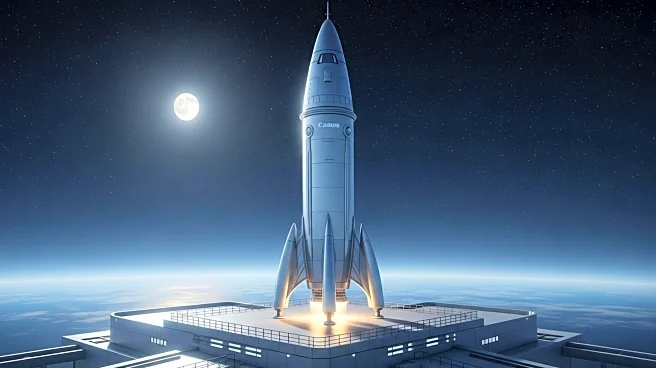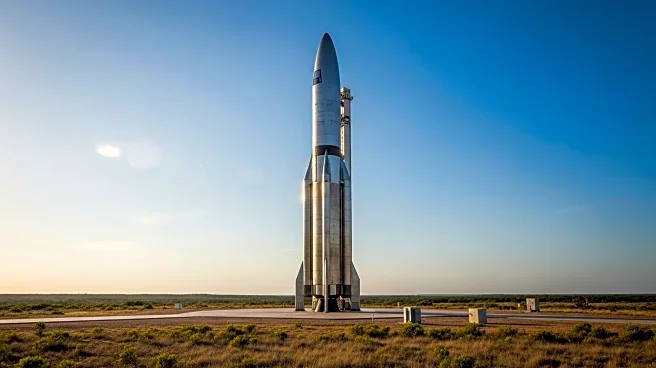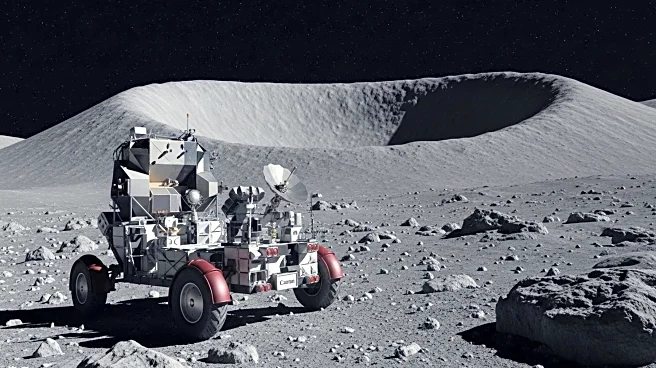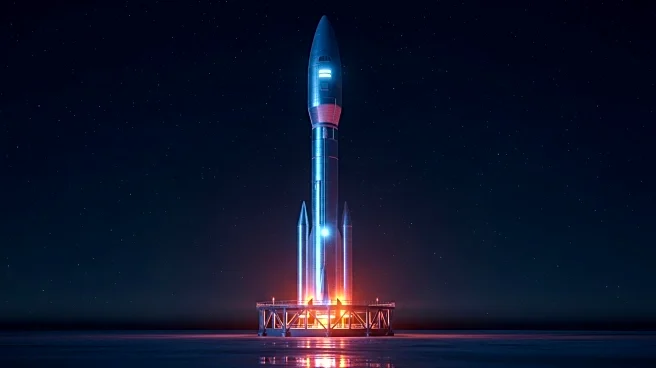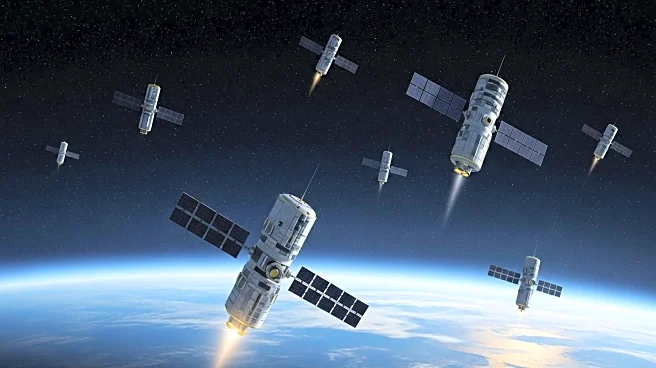What's Happening?
SpaceX is preparing for its next Starship test flight, scheduled for October 13, 2025. This flight marks the final launch of the current 'Block 2' version of the Starship, which will test new landing techniques and a reinforced heat shield. NASA is relying on SpaceX's Starship for its Artemis III mission, aiming for a crewed lunar landing by 2027. However, experts have raised concerns about the complexity and feasibility of NASA's plan, especially as China accelerates its lunar program with a goal to achieve its first moonwalk by 2030. SpaceX's Starlink network continues to expand, contributing to the company's significant revenue growth and private valuation.
Why It's Important?
The upcoming Starship test flight is crucial for NASA's Artemis program, which aims to establish U.S. leadership in lunar exploration amidst growing competition from China. Success in this test could reinforce confidence in SpaceX's ability to deliver a reliable crewed lunar lander, which is vital for NASA's timeline to beat China's lunar ambitions. The broader implications include potential shifts in geopolitical power dynamics in space exploration and significant impacts on the space industry, with SpaceX's rapid growth influencing market trends and investment in space technology.
What's Next?
If the test flight is successful, SpaceX will proceed with further development of the Starship, including vertical landing attempts and orbital flight tests. NASA will continue to push for its 2027 lunar landing goal, despite criticisms of its current plan's complexity. The outcome of this test could affect NASA's strategy and funding decisions, as well as influence political and public support for the Artemis program. Additionally, SpaceX's continued success may drive further investment in space ventures and technological advancements.
Beyond the Headlines
The competition between NASA and China in lunar exploration highlights broader ethical and strategic considerations, such as the importance of international collaboration versus nationalistic pursuits in space. The technological innovations stemming from these efforts could have long-term impacts on various industries, including telecommunications and defense. Moreover, the race to the moon may serve as a catalyst for future space exploration initiatives, potentially leading to new discoveries and advancements in human spaceflight.
